Keys to the Kingdom
UConn students will not just be playing pianos, they will be playing Steinways! That’s thanks to the Lawrence J. and Natalie D. Portell Foundation, which, along with the Persbacker Foundation and J & R Widmark Foundation, are purchasing Steinways with a goal to having UConn join the elite ranks of all-Steinway institutions. Here, Angelina Gadeliya, assistant professor-in-residence and director of keyboard studies, tests grand pianos at the Steinway & Sons factory in Queens, New York, last October. She played five new grands before selecting the one that now graces Louis J. von der Mehden Recital Hall. “I’m looking for a piano with incredible clarity, super-sensitive response as far as touch, and a really singing tone — for a pianist, that’s probably the most important thing,” says Gadeliya, who records and performs as a soloist with orchestras internationally.
—Kenneth Best
Keys to the Kingdom
UConn students will not just be playing pianos, they will be playing Steinways! That’s thanks to the Lawrence J. and Natalie D. Portell Foundation, which, along with the Persbacker Foundation and J & R Widmark Foundation, are purchasing Steinways with a goal to having UConn join the elite ranks of all-Steinway institutions. Here, Angelina Gadeliya, assistant professor-in-residence and director of keyboard studies, tests grand pianos at the Steinway & Sons factory in Queens, New York, last October. She played five new grands before selecting the one that now graces Louis J. von der Mehden Recital Hall. “I’m looking for a piano with incredible clarity, super-sensitive response as far as touch, and a really singing tone — for a pianist, that’s probably the most important thing,” says Gadeliya, who records and performs as a soloist with orchestras internationally. —Kenneth Best
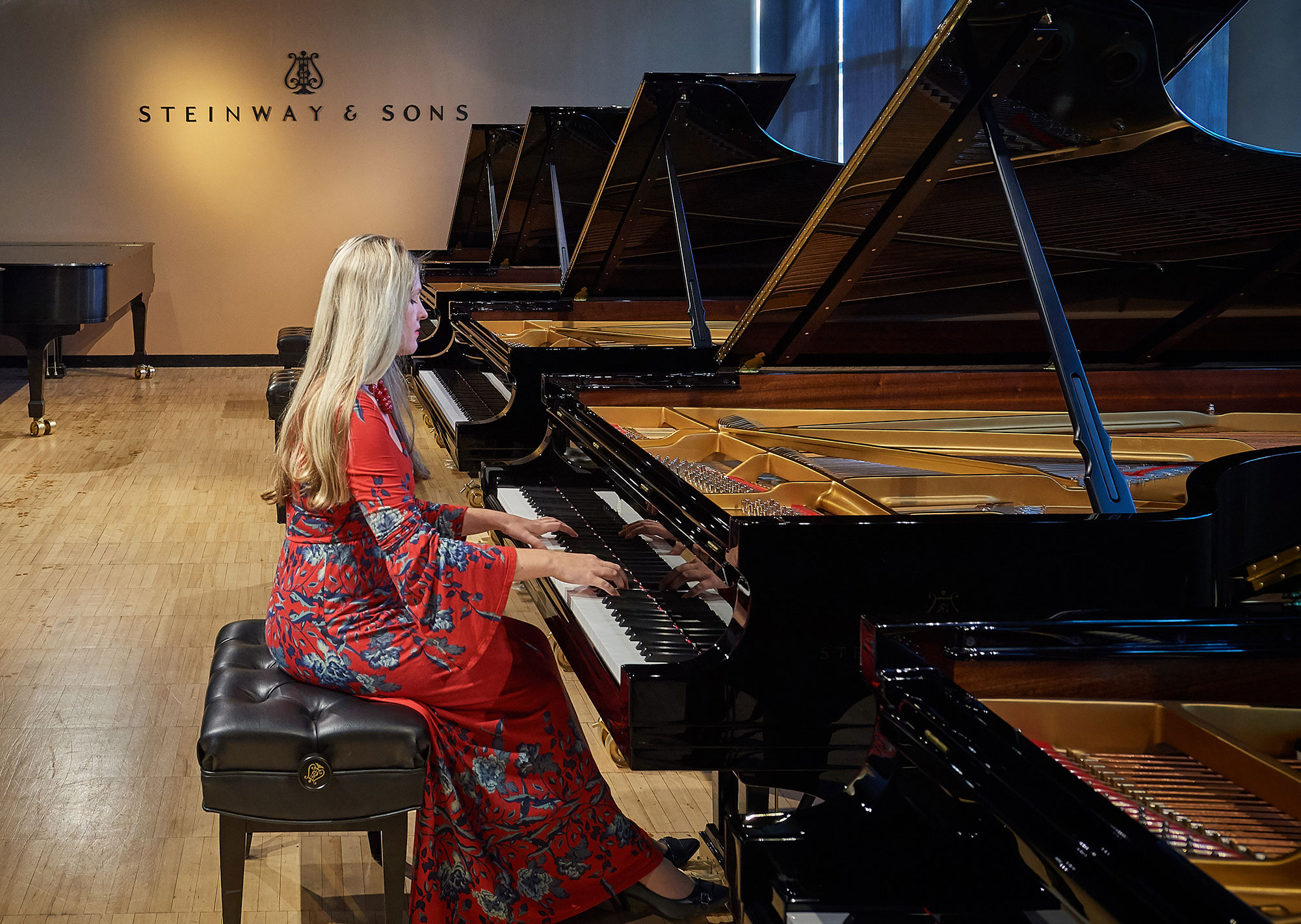
Let Them Play Steinways!
By Kenneth Best
Photos by Peter Morenus
Olga Radović, a first-year Master of Music candidate in piano performance, had mixed feelings when she learned that she would be the first musician to perform with the new Steinway & Sons grand concert piano that arrived in November for use at J. Louis von der Mehden Recital Hall.
“I had both excitement and concern,” says Radović, who performed on the piano in December as a soloist with the UConn Symphony Orchestra after winning the 2017 Aria/Concerto Competition last fall. “A brand-new piano can be very challenging to play and to control.”

♪ Listen to Olga Radović perform on the new Steinway & Sons grand concert piano while you read.


A native of Belgrade, Serbia, Radović has performed with orchestras since she was 12 but did not often play on pianos comparable to a Steinway — considered the best of its kind in the world. However, after talking with Angelina Gadeliya, assistant professor-in-residence and director of keyboard studies, about her own experiences performing with the handcrafted instrument, Radović understood the opportunity before her. “All I could feel was excitement and joy,” she says.
At her first rehearsal for the Concerto Concert, where she would play Robert Schumann’s “Piano Concerto in A minor, Op. 54,” Radović was eager to get started. “I was overwhelmed by the huge sound of the orchestra and the sound of the Steinway,” she says. “The only thing that I could say about the piano was how effortless it was to play.”
Several weeks later, just before Radović appeared on the newly renovated von der Mehden stage with conductor Harvey Felder, director of orchestral studies, the audience applauded warmly when informed by Eric Rice, head of the Department of Music, about the debut of the new piano. The 9-foot-long Steinway dominated the front of the stage, the reflection of its gold cast-iron frame, soundboard, bridge, and strings gleaming on the open lid.
Radović performed the first of the three movements in the Schumann composition, “Allegro affettuoso.” The piano alternates between delicate solo melodies and accompaniment with strings, oboe, clarinet, and the entire orchestra. Radović demonstrated dexterity and command of the keyboard while articulating the range of the hushed and vigorous moments in the work. Throughout her performance, Radović leaned into the varying tempi before finishing to an appreciative standing ovation.
“The control and ease are truly amazing,” Radović says of the piano. “The clarity of sound is so refreshing, and it simply grabs your attention. It was very surprising to me how the instrument, our tool, makes our playing more expressive and the realization of artistic ideas and thoughts are easier to bring to life. Since it is a new piano, the volume of sound is not there yet, but it will be in a couple of months for sure.”
UConn’s All-Steinway School Initiative
The new piano in von der Mehden is part of a long-term plan to replace the University’s inventory of 93 aging pianos, some of which date to the early 20th century, while moving to join the ranks of more than 190 All-Steinway institutions that include other major universities and prestigious music conservatories. Three years ago, 12 new pianos arrived in Storrs, including a Steinway grand piano for rehearsals and performances, and 11 Boston upright pianos, used by 190 music students and faculty for teaching. Boston is a subsidiary of Steinway & Sons. Purchase of these pianos were made possible through private philanthropy and a gift by the Lawrence J. and Natalie D. Portell Foundation, which collaborated with the Persbacker Foundation and J & R Widmark Foundation to fund the new Steinway for von der Mehden.
Steinway & Sons produces up to 2,500 grand pianos a year, the culmination of a three-year process that begins with the selection of wood seasoned and aged for two years. Following this stage are more than 12 months of handcrafted work by 450 artisans who make 12,000 individual parts for each instrument as well as many hours of fine-tuned labor for each piano. The company has had factories in Astoria, N.Y., since 1870, and in Hamburg, Germany, which opened in 1880 to meet the demand for pianos in Europe. The company holds 126 patents used for creating its instruments.
The careful attention to detail and artisanship that goes into each piano is why the roster of Steinway artists reads like a Who’s Who of renowned performers, ranging from international concert pianist Lang Lang, jazz pianist and vocalist Diana Krall, and Rock and Roll Hall of Famer Billy Joel to legendary figures such as Cole Porter, Sergei Rachmaninoff, and Arthur Rubinstein. It also is why care is taken when selecting a piano that will be used by talented student musicians, faculty who perform with premier orchestras, and guest artists visiting Storrs.
“Access to quality instruments is one of the most important resources that a music institution can have,” says Rice of the effort to join the ranks of All-Steinway institutions. “Students need to be able to feel the action of a quality piano as they are practicing so they are accustomed to it when they perform on a good instrument in a concert hall.”
Rice, Gadeliya, and Anne D’Alleva, dean of the School of Fine Arts, led a UConn group that traveled to the Steinway factory in New York in mid-October to tour the facility and select the new piano. The new instrument would be the largest of the Steinway line of pianos, which range from a 5-foot, 1-inch Model S piano to the 9-foot Model D concert grand.
Two days before heading to the factory, Gadeliya discussed the qualities she had requested from the Steinway staff for the five pianos she would test in the Selection Room in Astoria for sound, feel, and tone with works by giants of the classical piano repertoire — Johann Sebastian Bach, Ludwig van Beethoven, Frédéric Chopin, and Franz Liszt.
“I’m looking for a piano with incredible clarity, super-sensitive response, as far as touch, and a really singing tone; for a pianist, that’s probably the most important thing,” says Gadeliya, who records and performs as a soloist with orchestras internationally. “My favorite Steinways are from the 1920s, where they had this incredibly cantabile [singing], golden, beautiful, round tone quality.”
“
Access to quality instruments is one of the most important resources that a music institution can have.”
Behind the Art of Making Music
The UConn delegation began their day in New York with a 90-minute tour of the facility, observing the various phases of making a Steinway piano. The process starts with bending of the 20-foot-long rim, made from glued laminations of up to 17 layers of hard rock maple clamped onto a metal press shaped for a specific piano model. After 24 hours, the new rim moves to a conditioning room, where it sits for months with hundreds of other rims. When a rim emerges from its seasoning, over the next several months the hand assembly of the piano’s legs, soundboard, frame, bridge, and keyboard begins. The instrument is sprayed black, polished, and then moves through with the installation of the piano action, hammers, and keys. These action and hammers are also homegrown and fabricated in-house, and the piano cast iron plate and keys are produced in other Steinway-owned factories. After installation of the piano components – the process concludes with weeks of regulation, tuning, and voicing completing the keyboard with the creation of the key hammers in the “action department,” the making and installation of strings, and dozens of hours of final tuning.
“It’s like an anatomy lesson,” says Gadeliya, who lived near the factory for many years but never toured inside, owing to her busy schedule of studying and touring. “Just to see the rim bending was incredible and to know how long the process existed and how little has changed since the 1870s. The action department felt like Santa’s workshop. All these tiny little pieces are handmade and put together so meticulously with so much care and such attention to detail. It’s just amazing to watch.”
During the tour, the UConn group met Andrew Horbachevsky ’80 ENG, vice president for manufacturing, who has been with Steinway for 30 years. He described how the training of Steinway craftsmen includes rotating employees for six months at a time for several hours each day to learn skills under the watchful eyes of factory veterans in the piano-making process outside of their own area of expertise so they have a holistic understanding of how the instrument is made.
“We like to say we’ve been a continuous improvement program for 165 years,” Horbachevsky says. “We go to great lengths to scour the world to get the best materials. On the method side, it’s all craftsmanship. There’s very few products like ours being built today that relies on the human element. In a lot of respects, we have to grow our own talent. We do rely a lot on the methods we’ve developed over decades.”
It Starts with A Tree
a behind-the-scenes tour of the Long Island City, Queens, factory
Following the tour, the group meets in a conference room adjacent to the Selection Room with executives from Steinway and trustees from the three donor foundations, discussing the University’s progress toward realizing its goal of becoming an All-Steinway institution. A large poster of the roster of the All-Steinway conservatories, colleges, universities, and other schools hangs prominently on a wall. Through the room’s windows, piano technician Eric Diehl can be seen making final adjustments to the five pianos Gadeliya will test.
Inside the Selection Room, five concert grand pianos stand, lids open, on a hardwood floor lined up along the right side of the room, a bench set before each instrument. The occupants of the conference room move into the Selection Room and stand before the glass window as Gadeliya sits at the first piano in line, playing a few minutes at each one before returning to those she wishes to hear more closely.
She would use four compositions to test various aspects of the tonal qualities of the pianos — Chopin’s “Piano Concerto No. 2 in F minor, Op. 21,” for the singing tone; Liszt’s “Ballade No. 2 in B minor,” to hear the bass tone; Beethoven’s “Sonata No. 32 in C minor, Op. 111,” to gauge the variety of colors in each register; and Bach’s “Partita No. 1 in B flat major, BWV 825,” for tone clarity and response.
After playing on the first piano, Gadeliya moves to the second, plays a bit, and turns to Rice asking, “Can you hear the difference? It’s immediate. Much better already.”
Rice nods in agreement as Gadeliya plays a bass run, moves up the keyboard, and repeatedly strikes a key in the upper range to listen for sustain — how long the note maintains its resonance. She continues down the line of five instruments, filling the room with starts and stops of sound. At the fifth piano, she cuts short her playing and revisits to the fourth instrument in line. She plays more runs up and down the keyboard, and strikes bass and tenor notes. She then goes back and forth between the third and fourth pianos before staying at the fourth one, where Rice joins her.
“This one has the depth,” Gadeliya says to Rice.
“It’s so much warmer,” he says.
Gadeliya decides on the fourth piano, which will only require some adjustments in the keyboard action. It is the Steinway that will come to reside in von der Mehden. Soon, Diehl rolls his tool cart next to the piano, talks with Gadeliya, and pulls out the keyboard to begin making adjustments.
“I loved her sample of repertoire,” says Rice, a scholar of early music. “The Chopin was extremely helpful, and hearing some Bach. I was going to joke with her, saying even Bach might like that piano. From what we know, Bach was not a big piano fan. It’s not often that you hear the same model of piano back to back to back. She’s definitely kicking the tires.”
Gadeliya says she was surprised how quickly the fourth piano stood out from the others.
“It was very obvious,” she says. “Just the difference in the fullness of sound, the richness of each register, and the colors across the register. The full, singing tone and the ability of the piano to sustain. The bright quality in the top register. The clarity of the bass, while at the same time having a full sound. You want it to sound like an orchestra, and it did. This piano was far superior to the other options and really stood out.”
After touring the Steinway factory and observing the process of selecting the new piano, D’Alleva, a scholar of art history and gender studies, described the experience as “a transformational day.”
“For me, the factory tour was really about seeing quality in action; the incredible commitment at every stage of the manufacturing process,” she says. “The creation of these pianos is an art form. Each piano is an art work in itself that’s then used to make more beautiful art through music. I’m thinking of all the students who are going to play this piano – all the rehearsals, all the performances – and how this piano is going to become part of the life of the School of Fine Arts in such a central way. It’s exciting to think about that.”

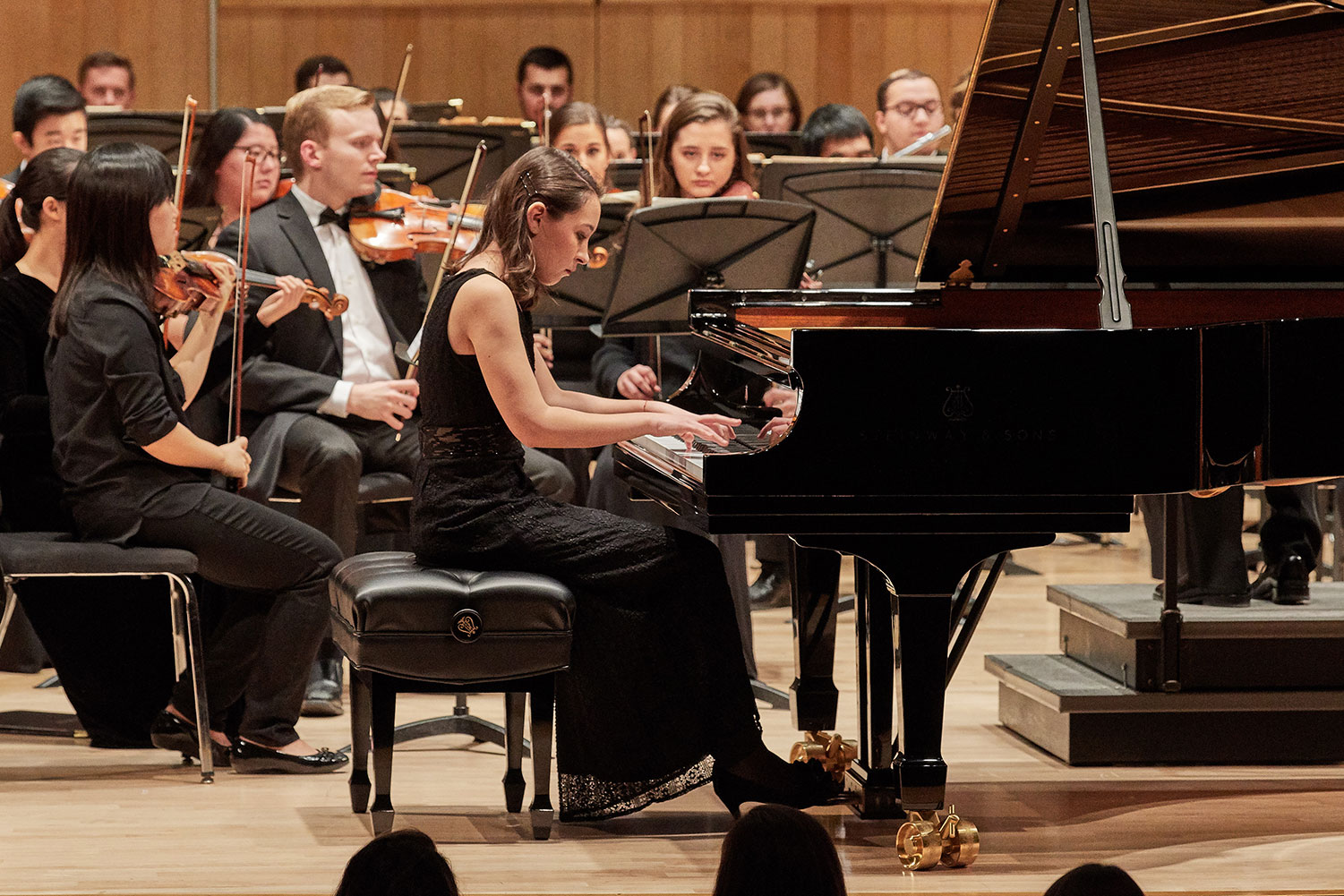

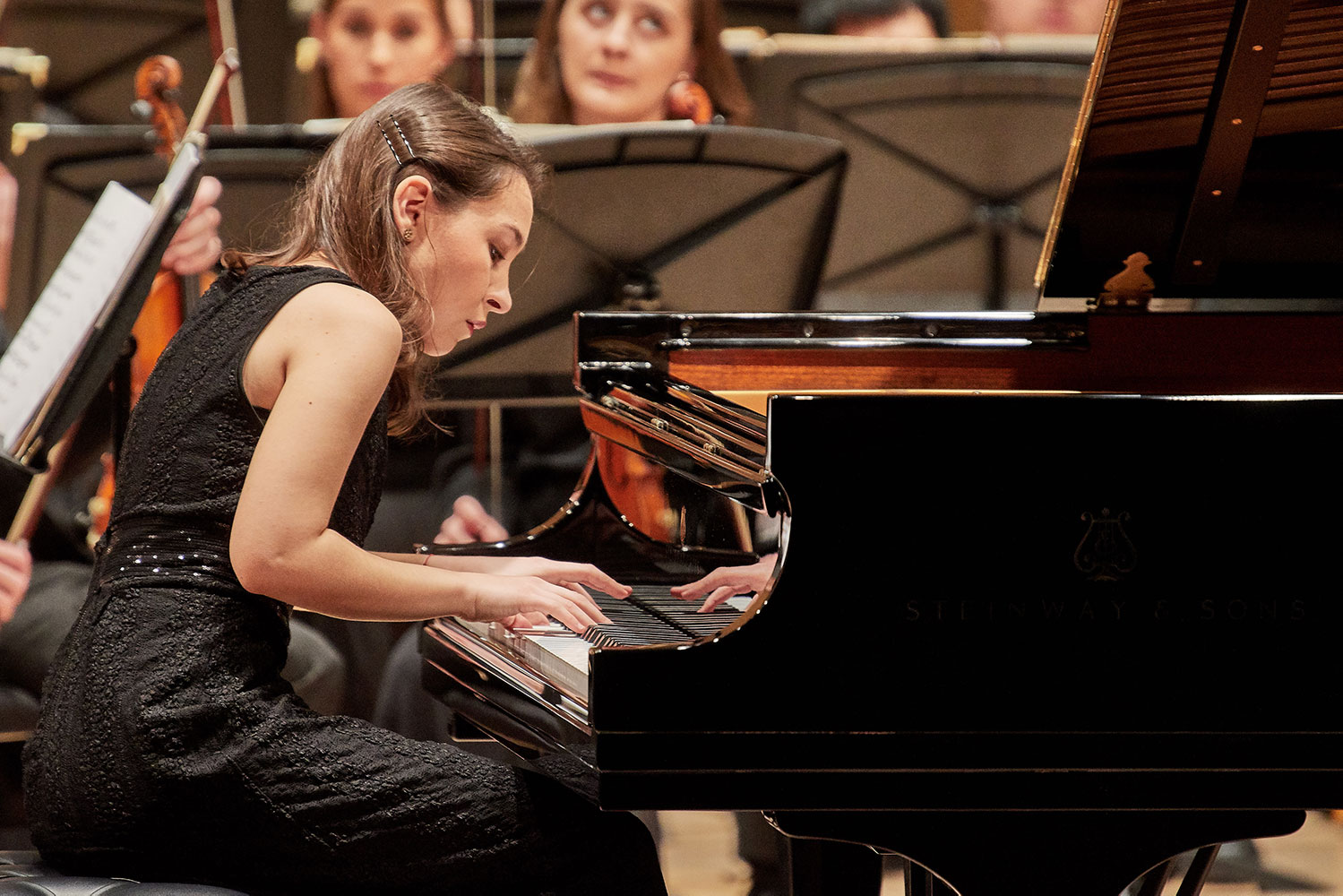
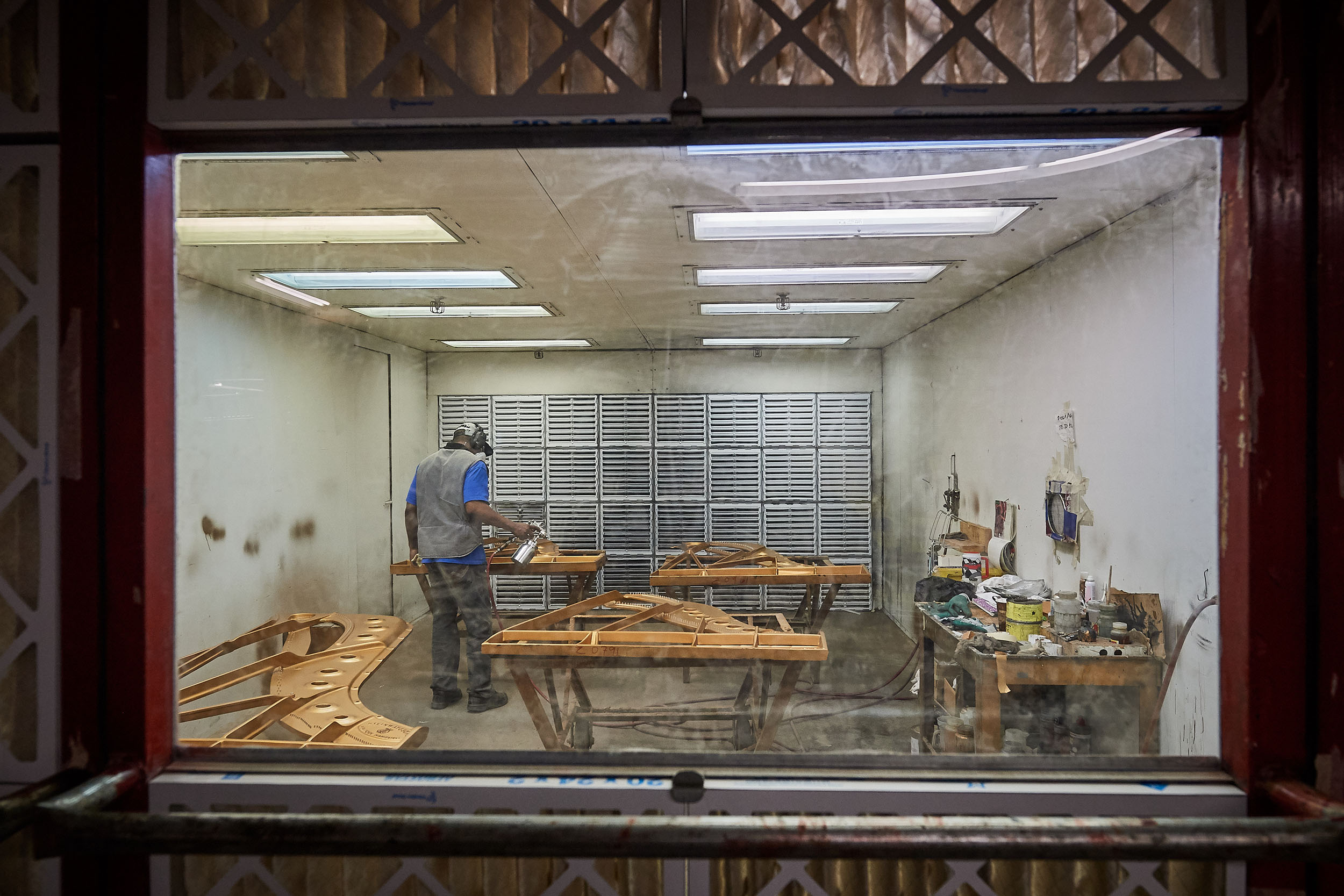
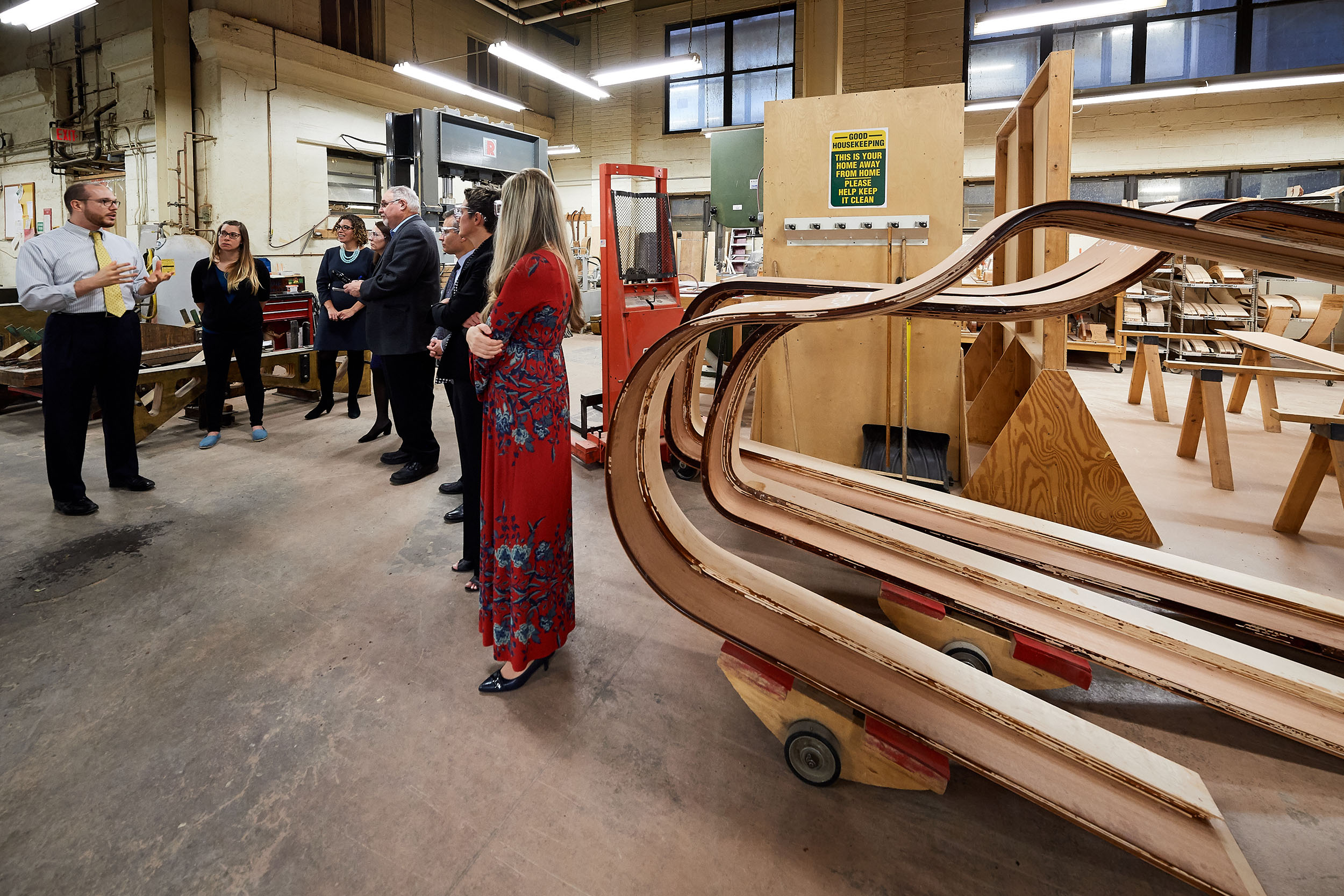
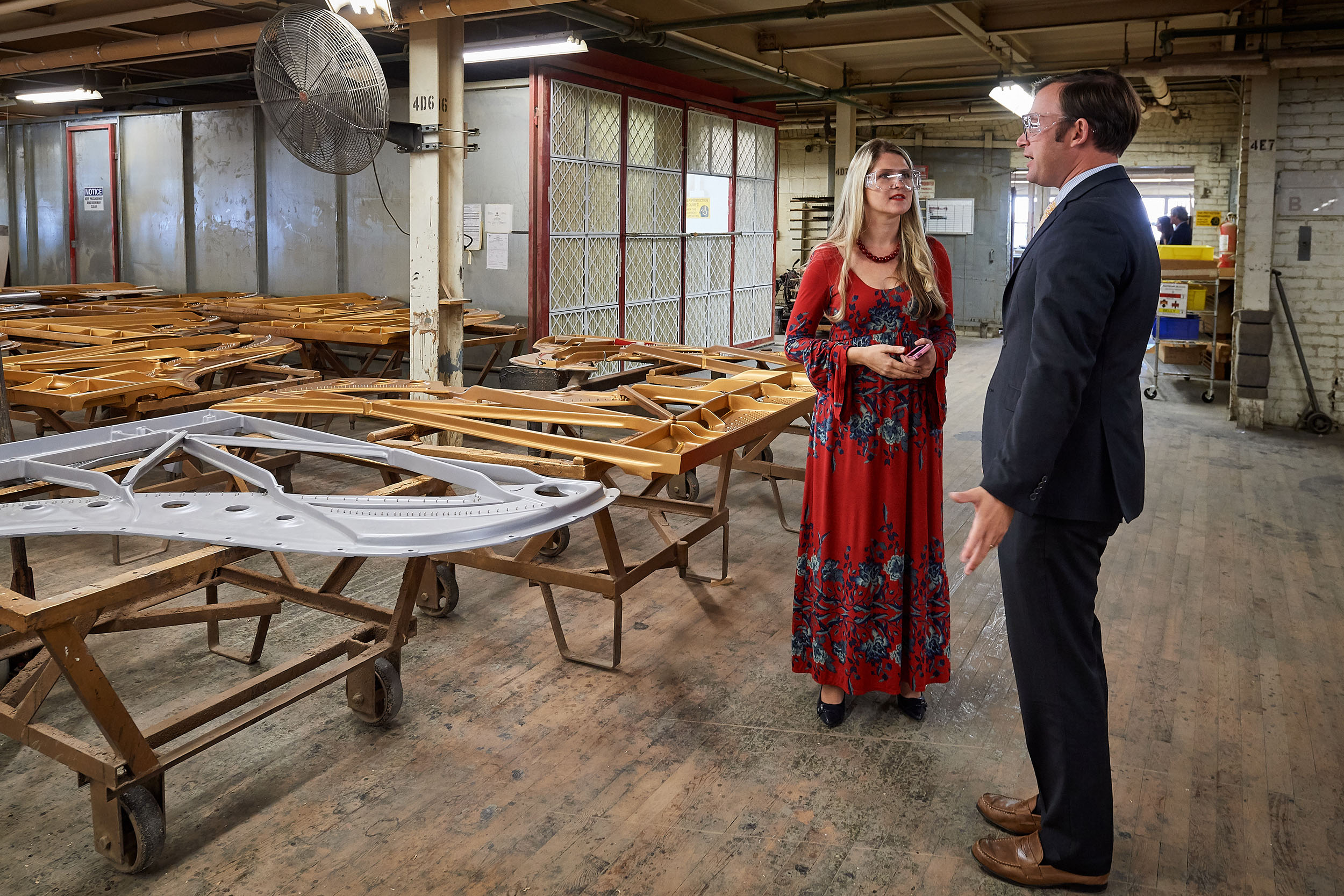
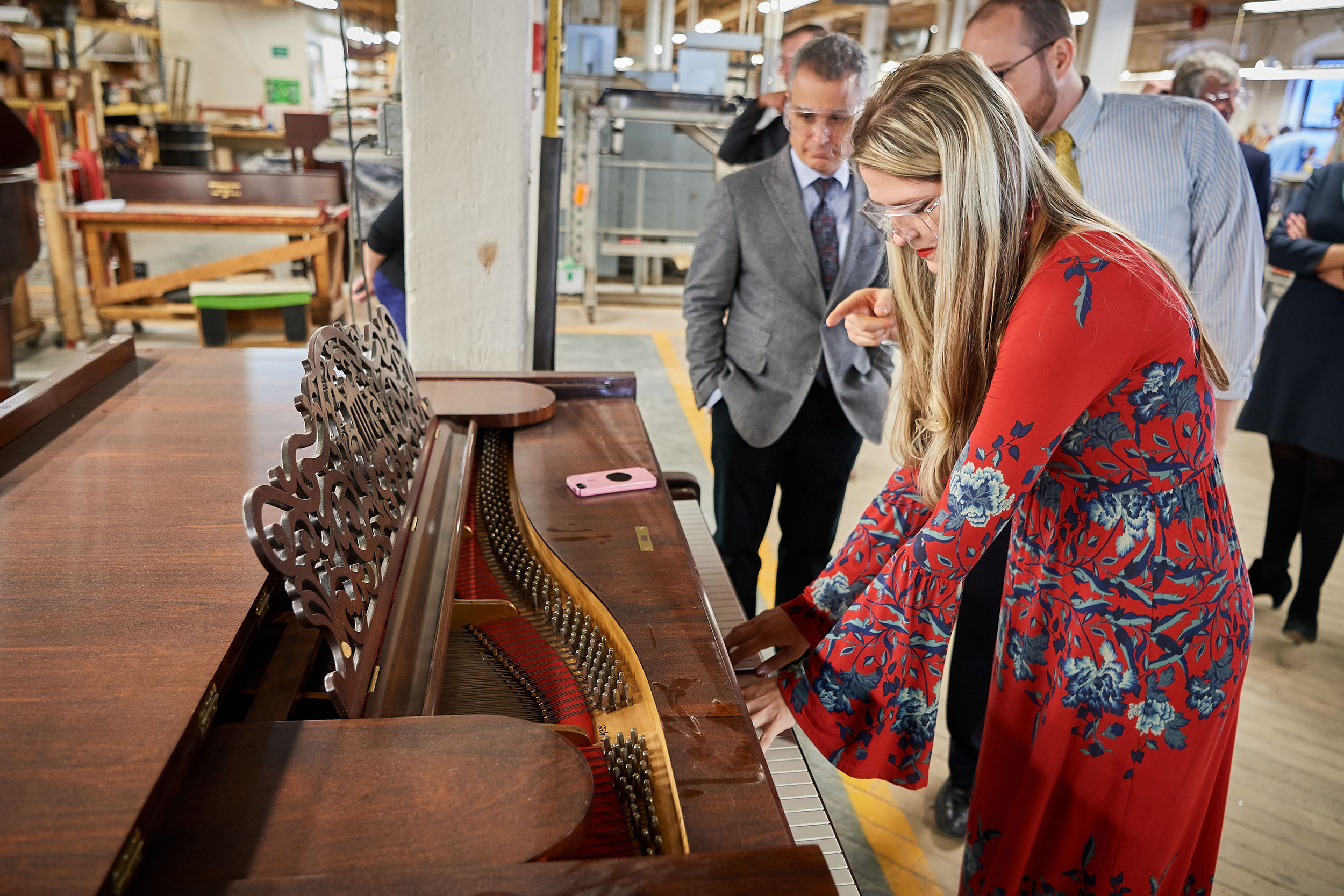
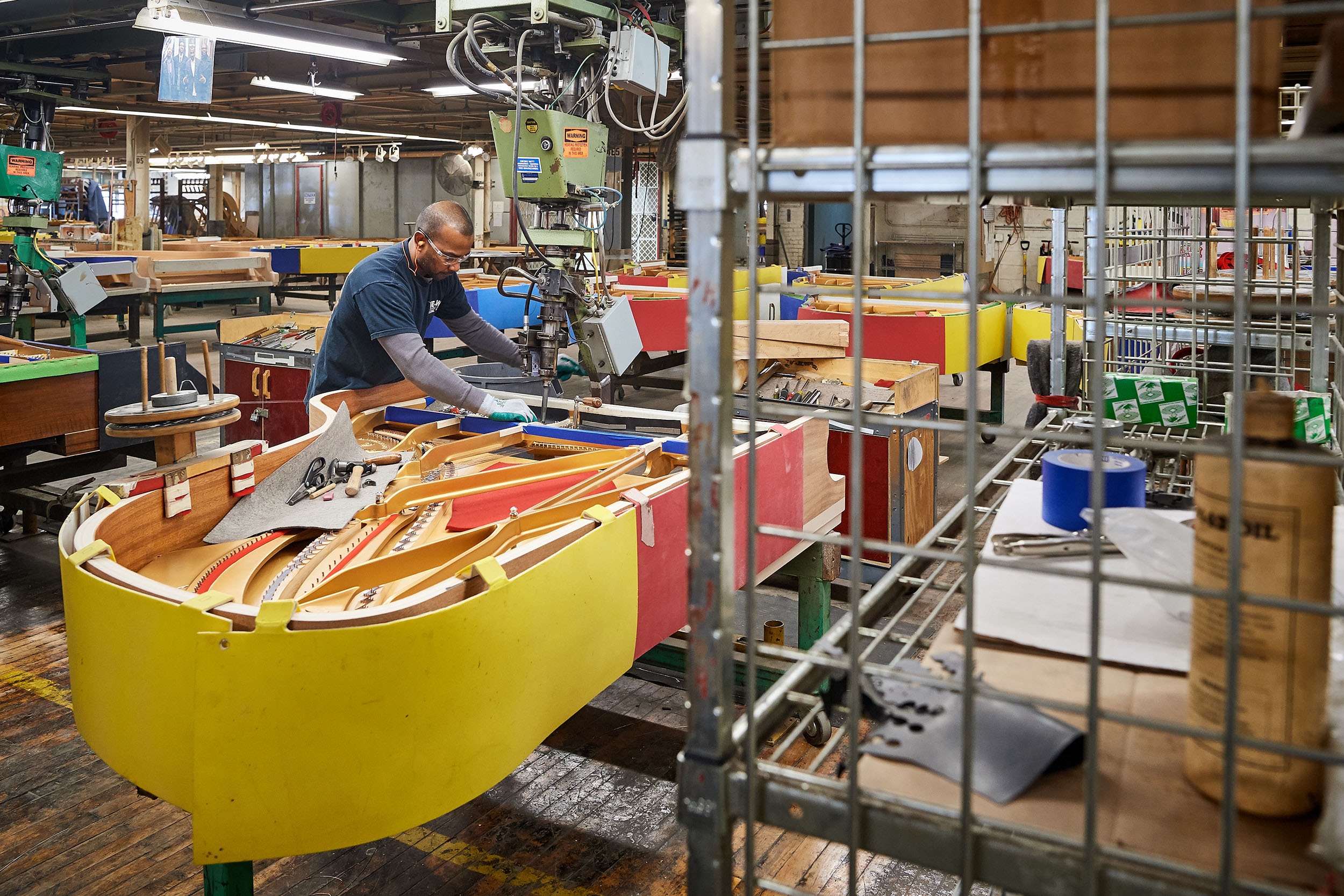



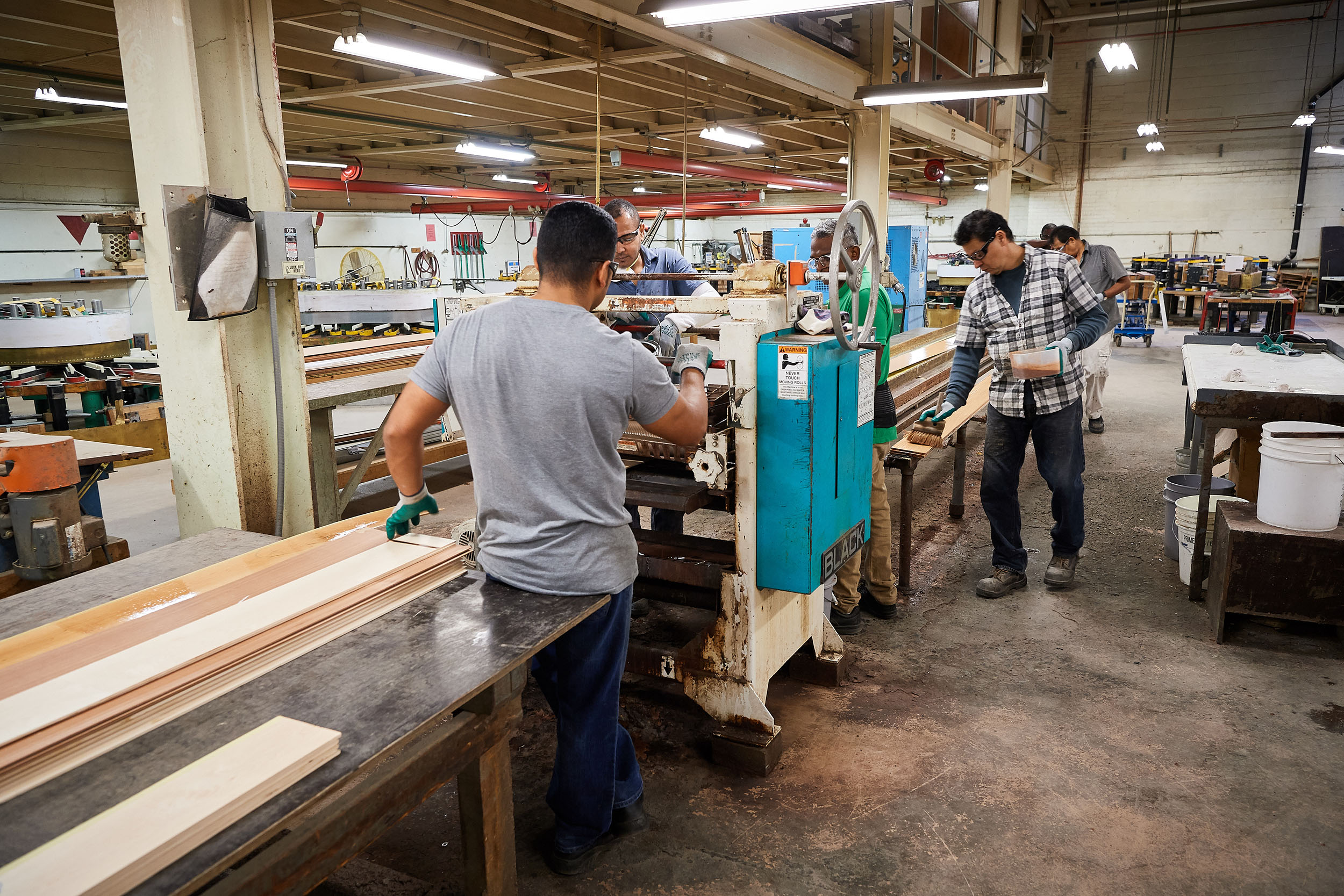
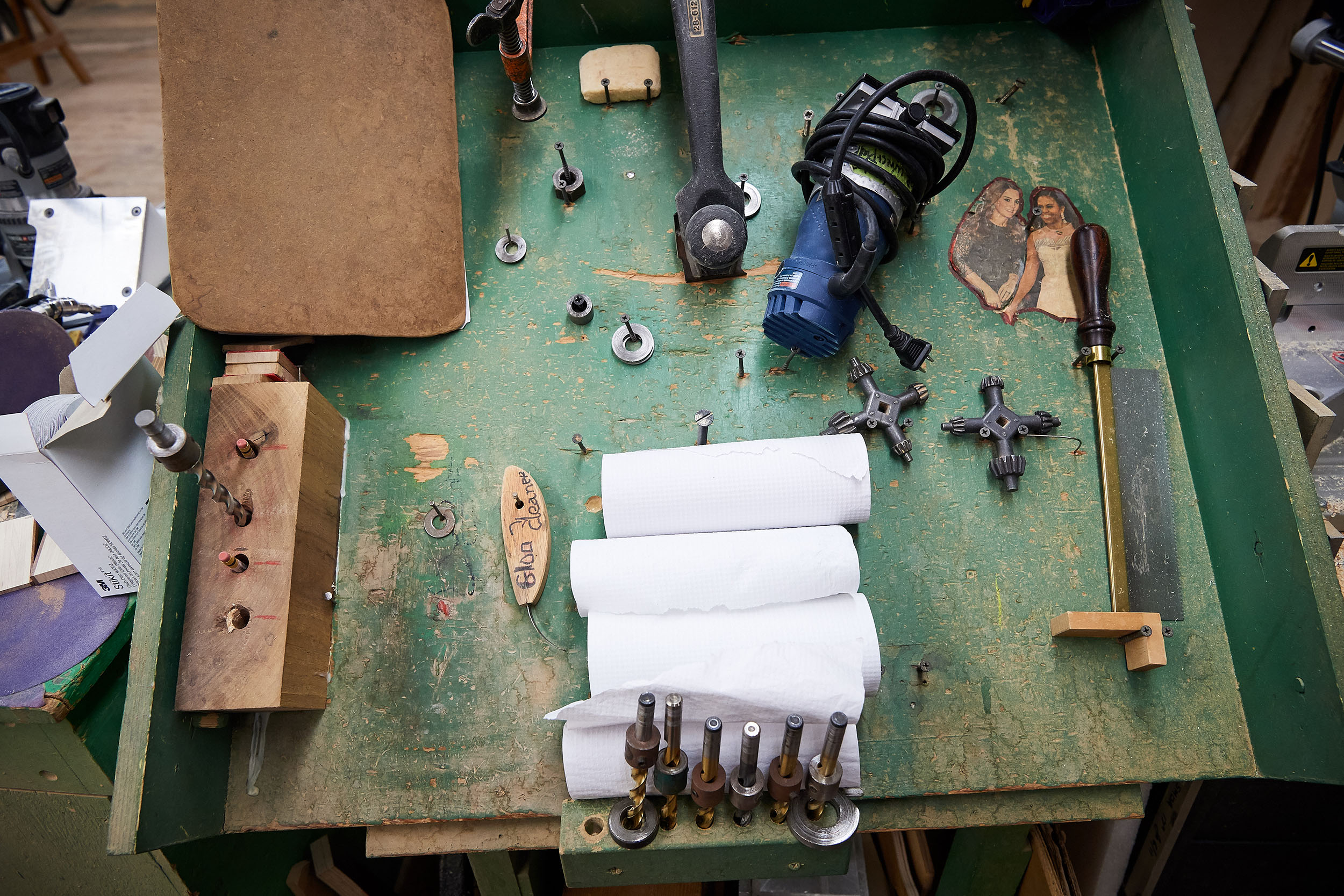
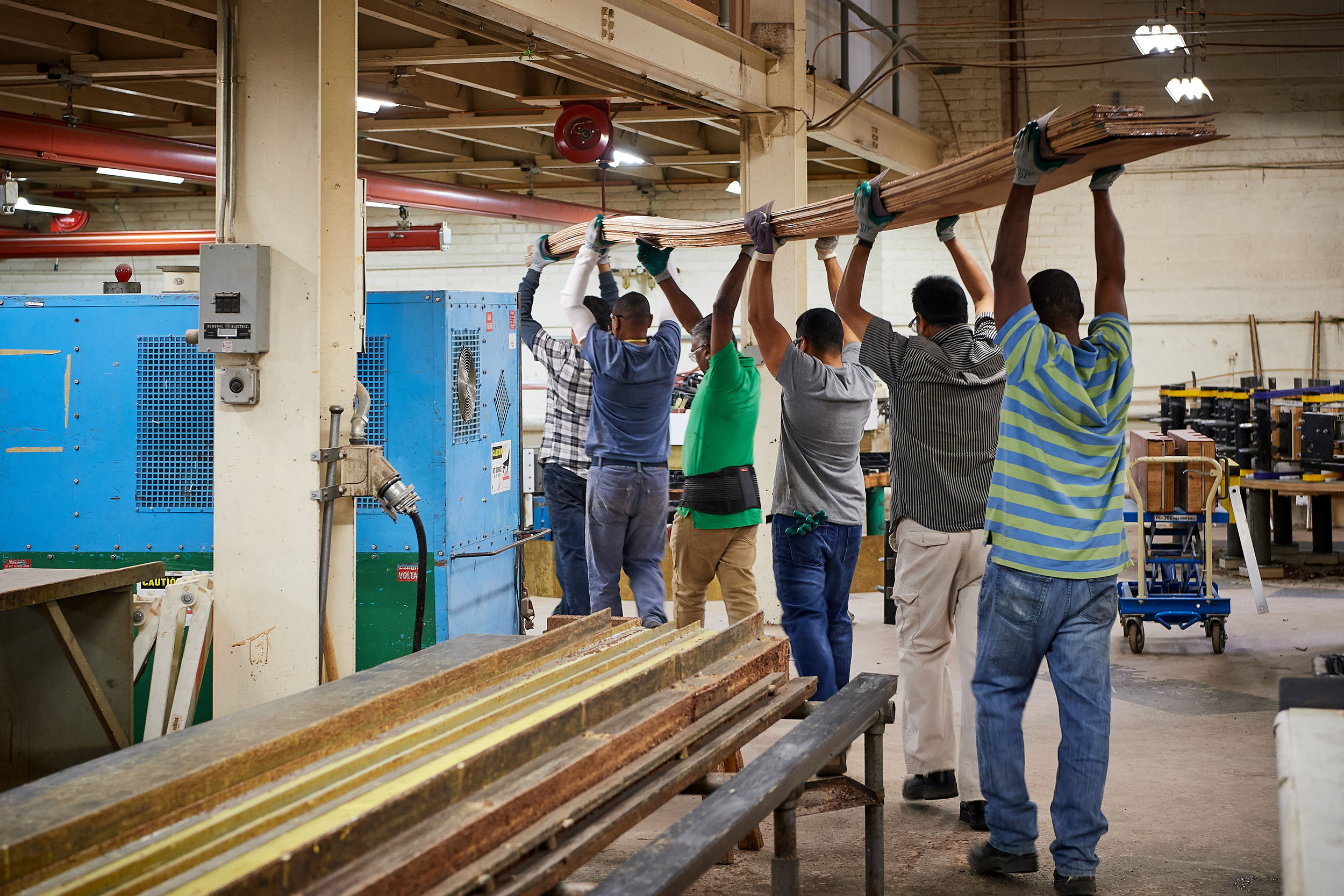
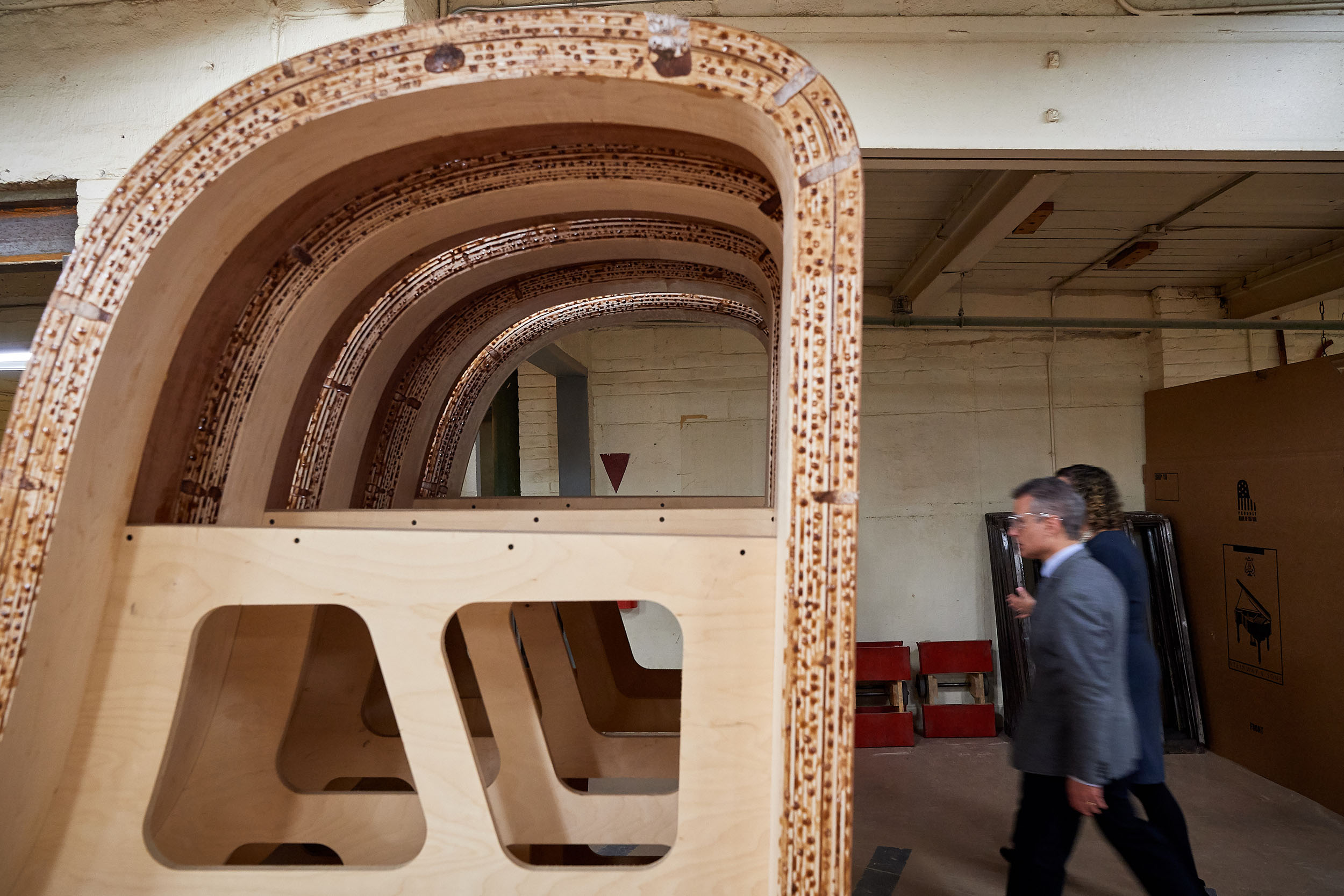
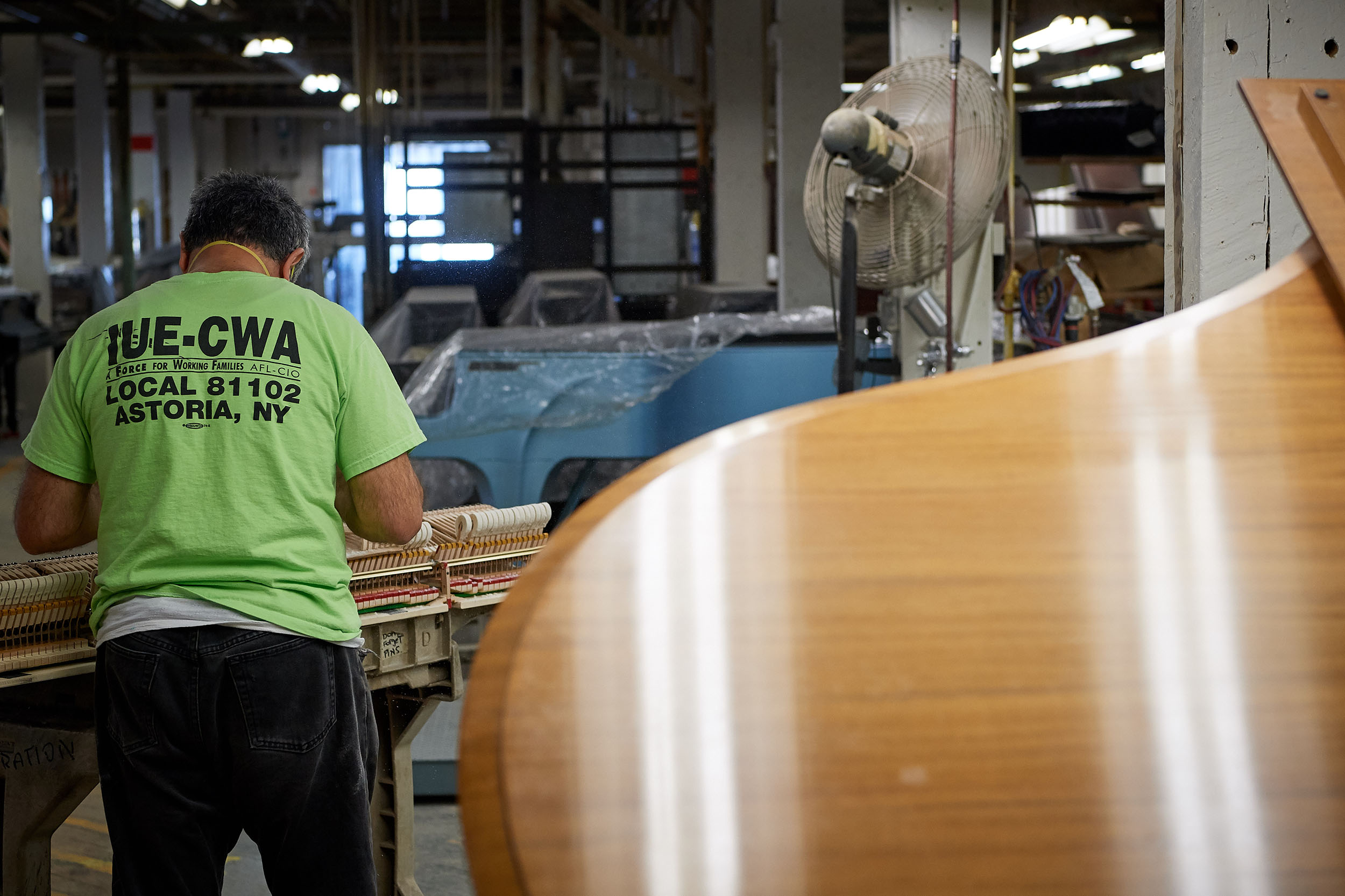

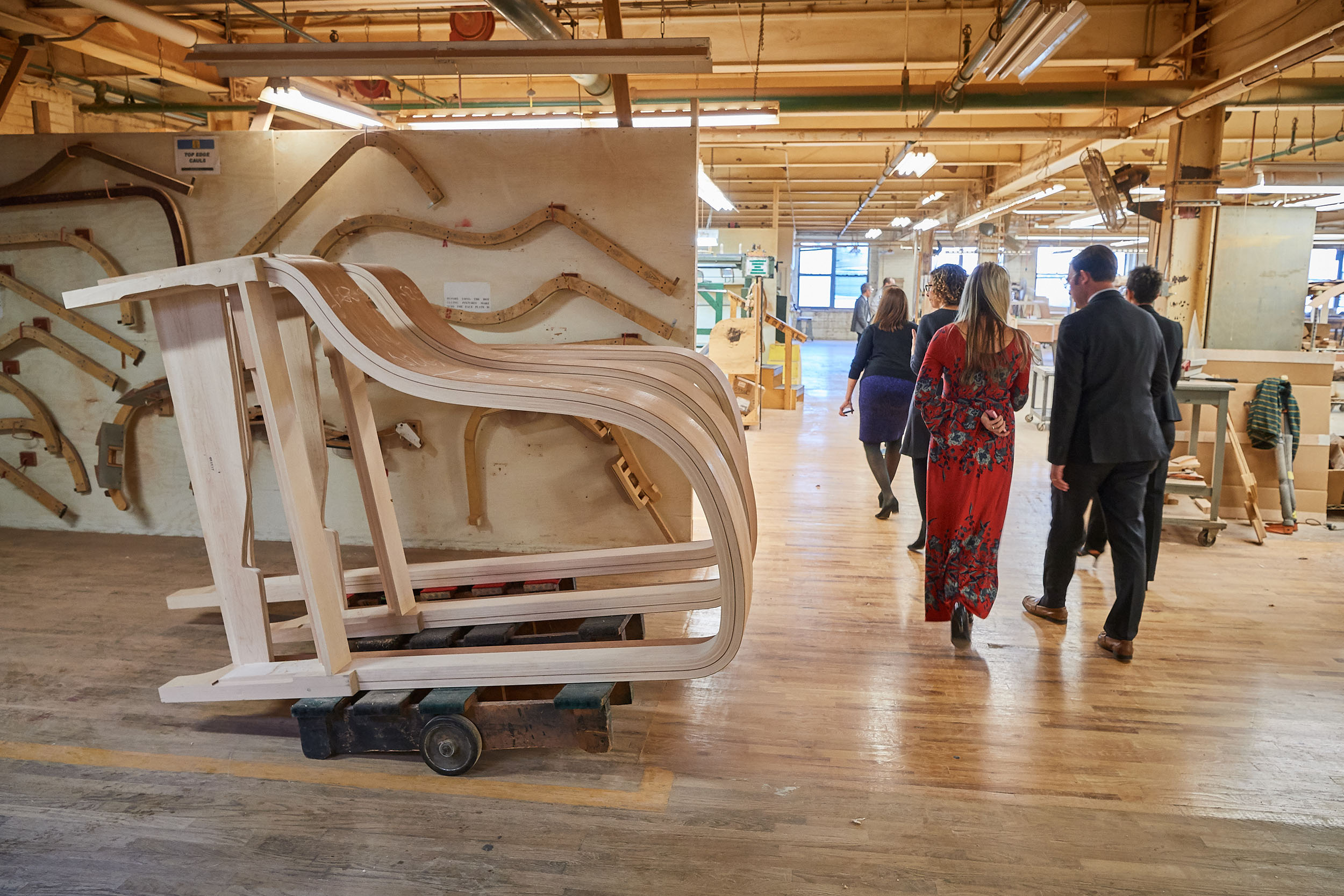

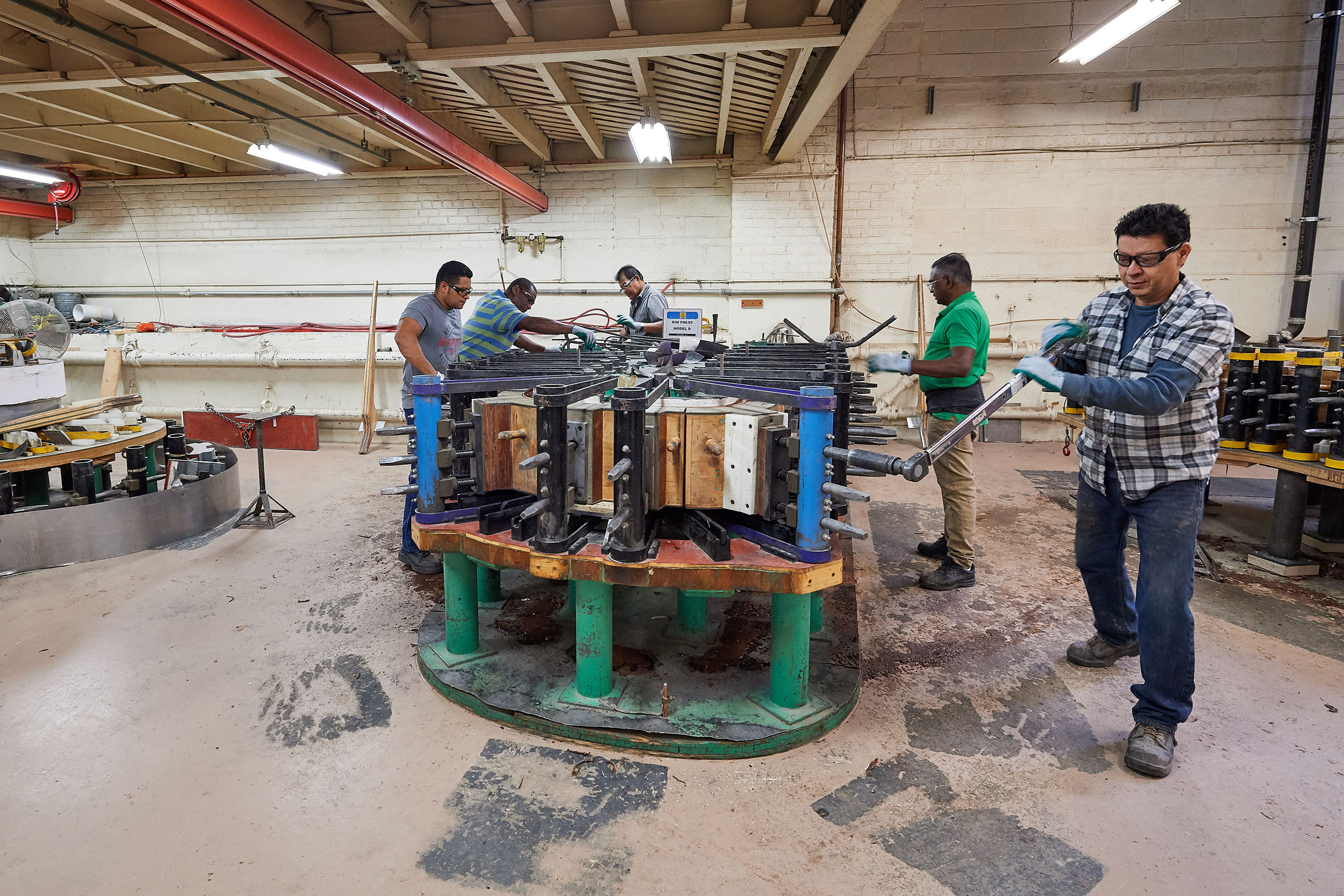
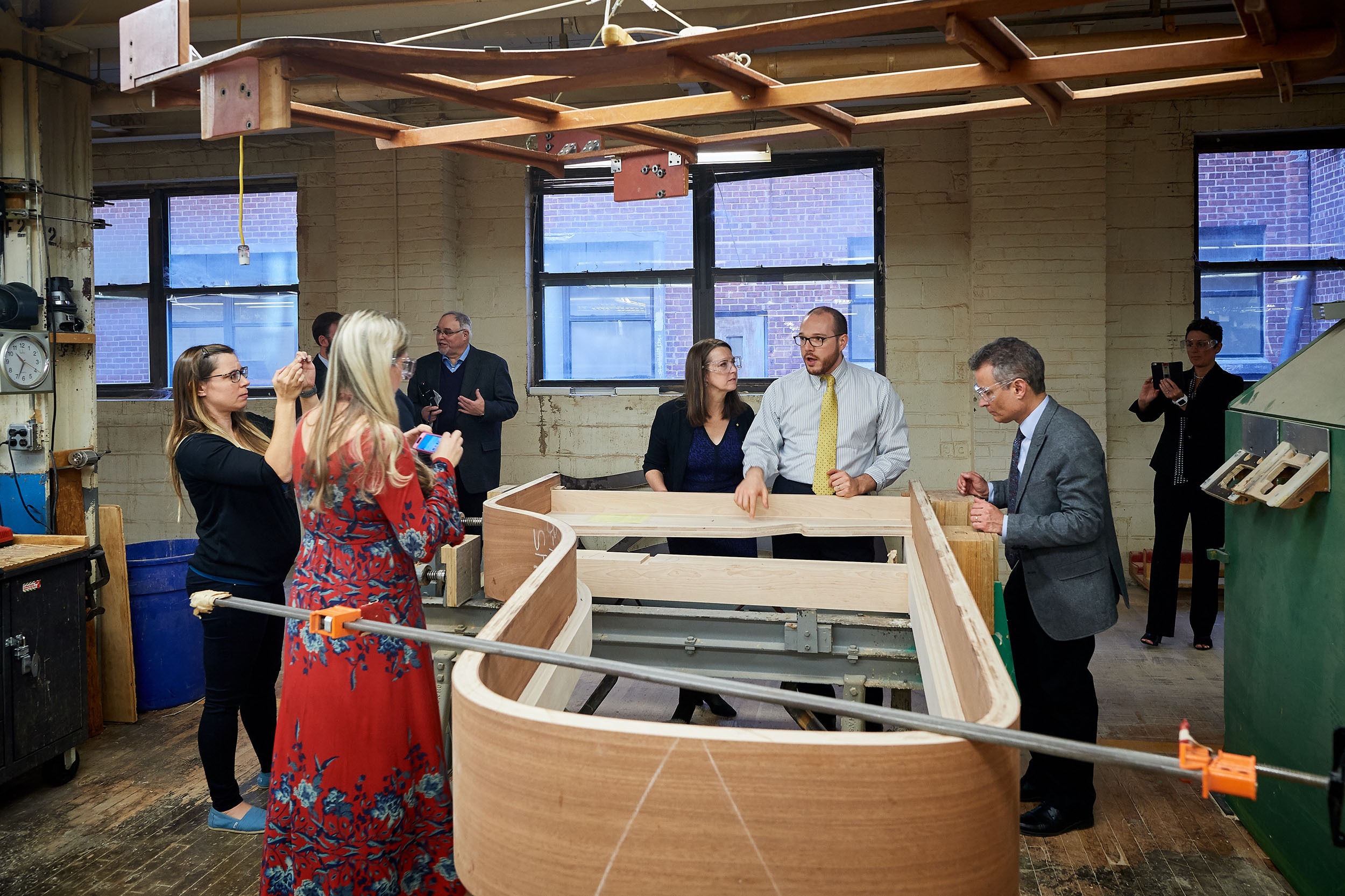
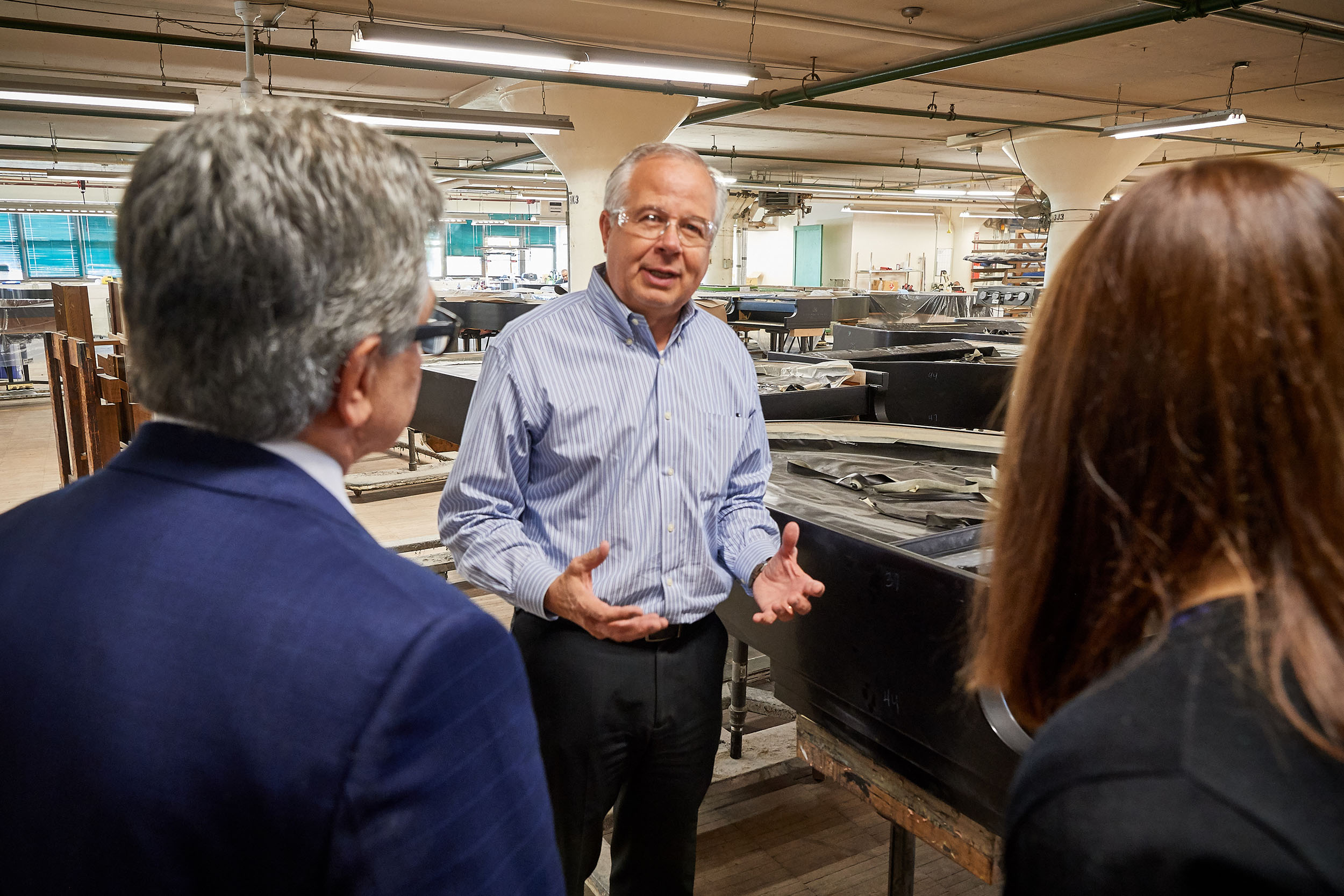
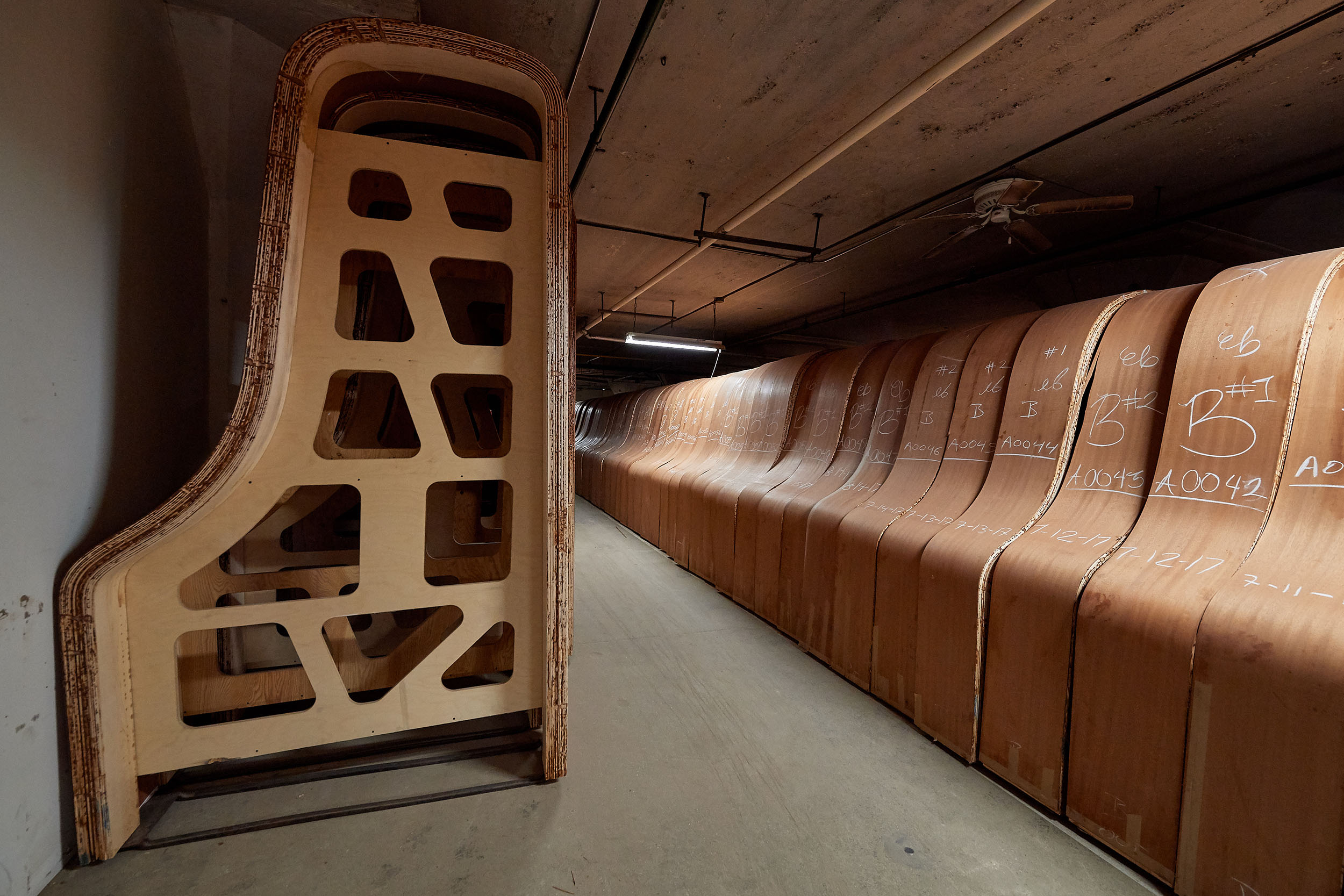
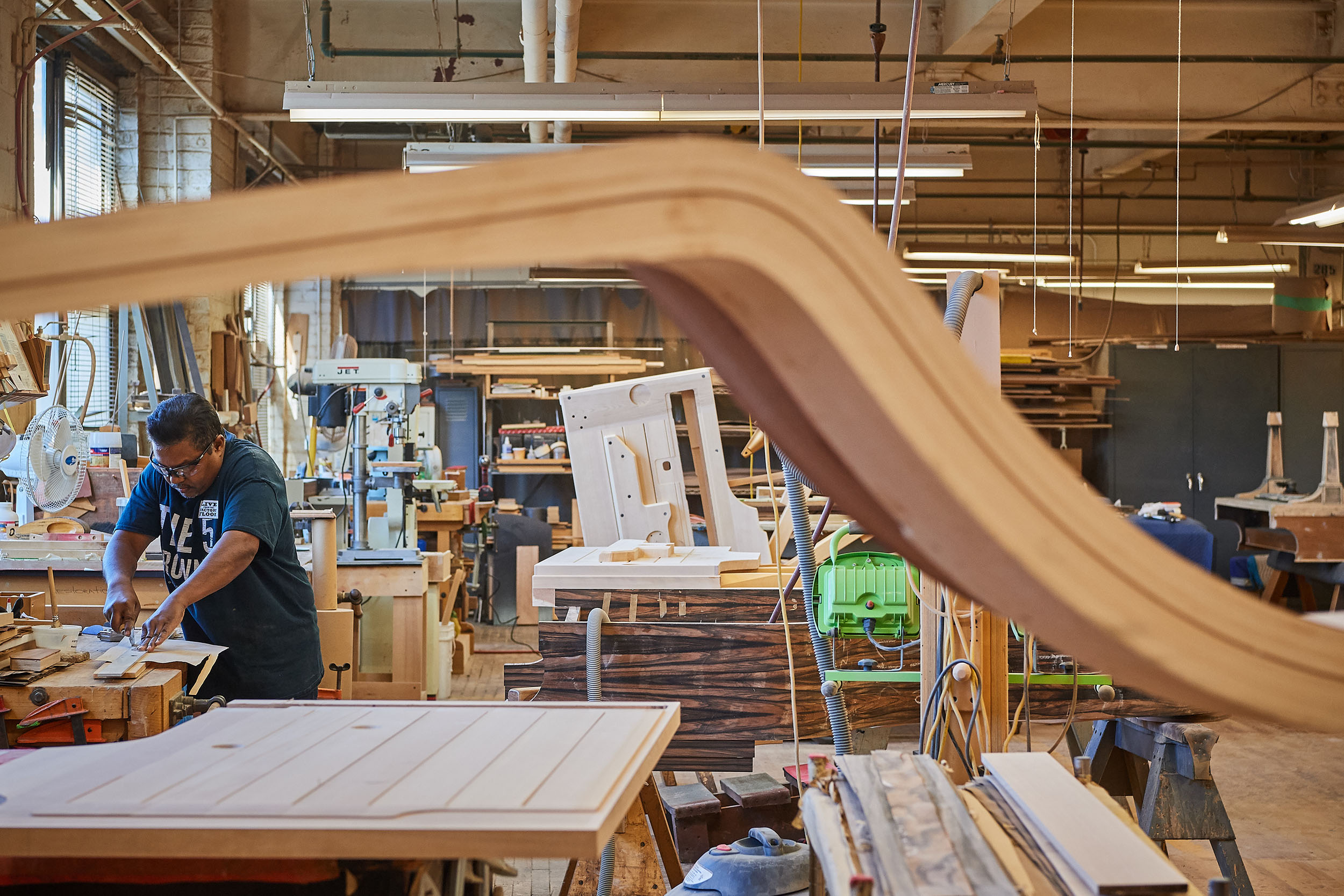
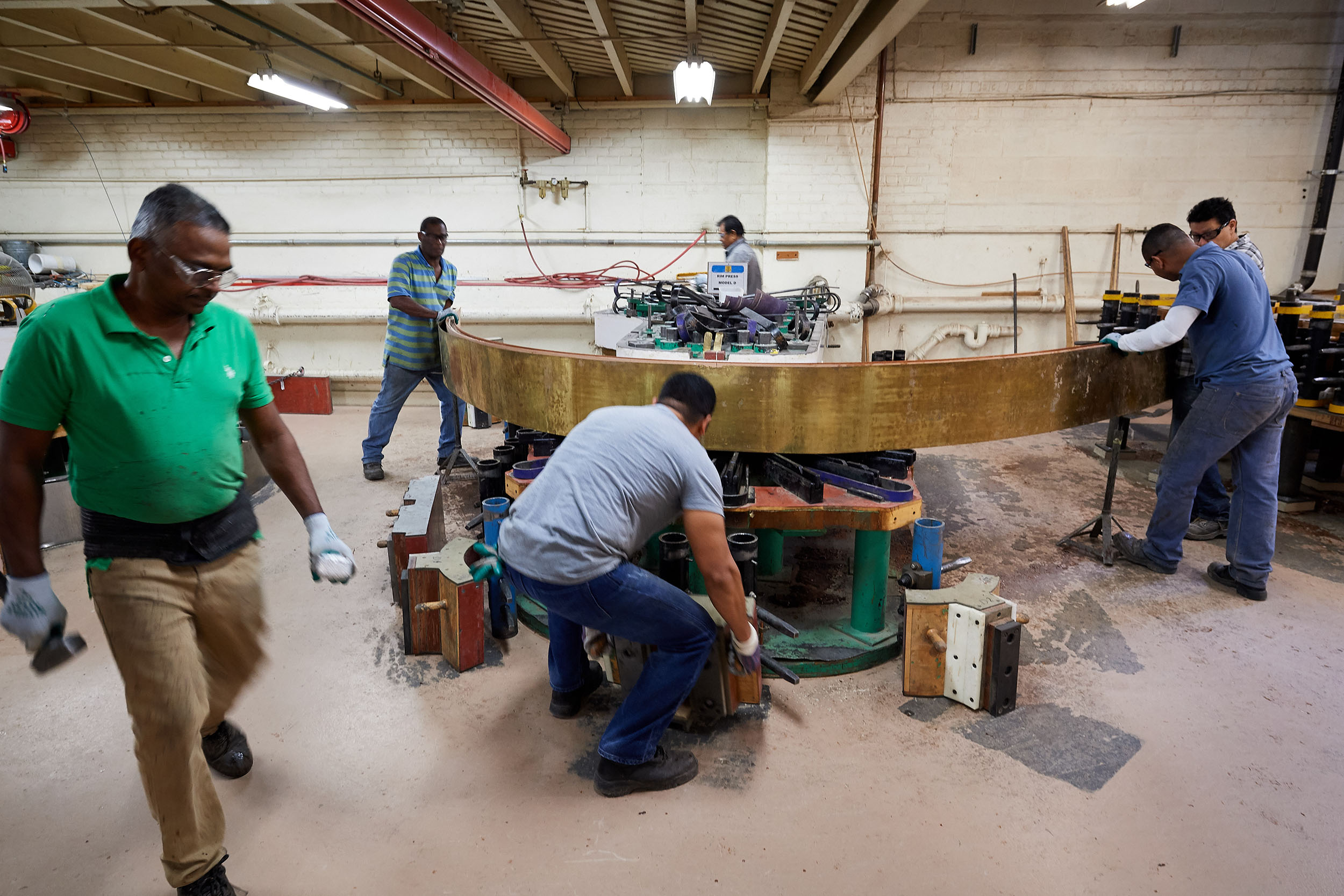
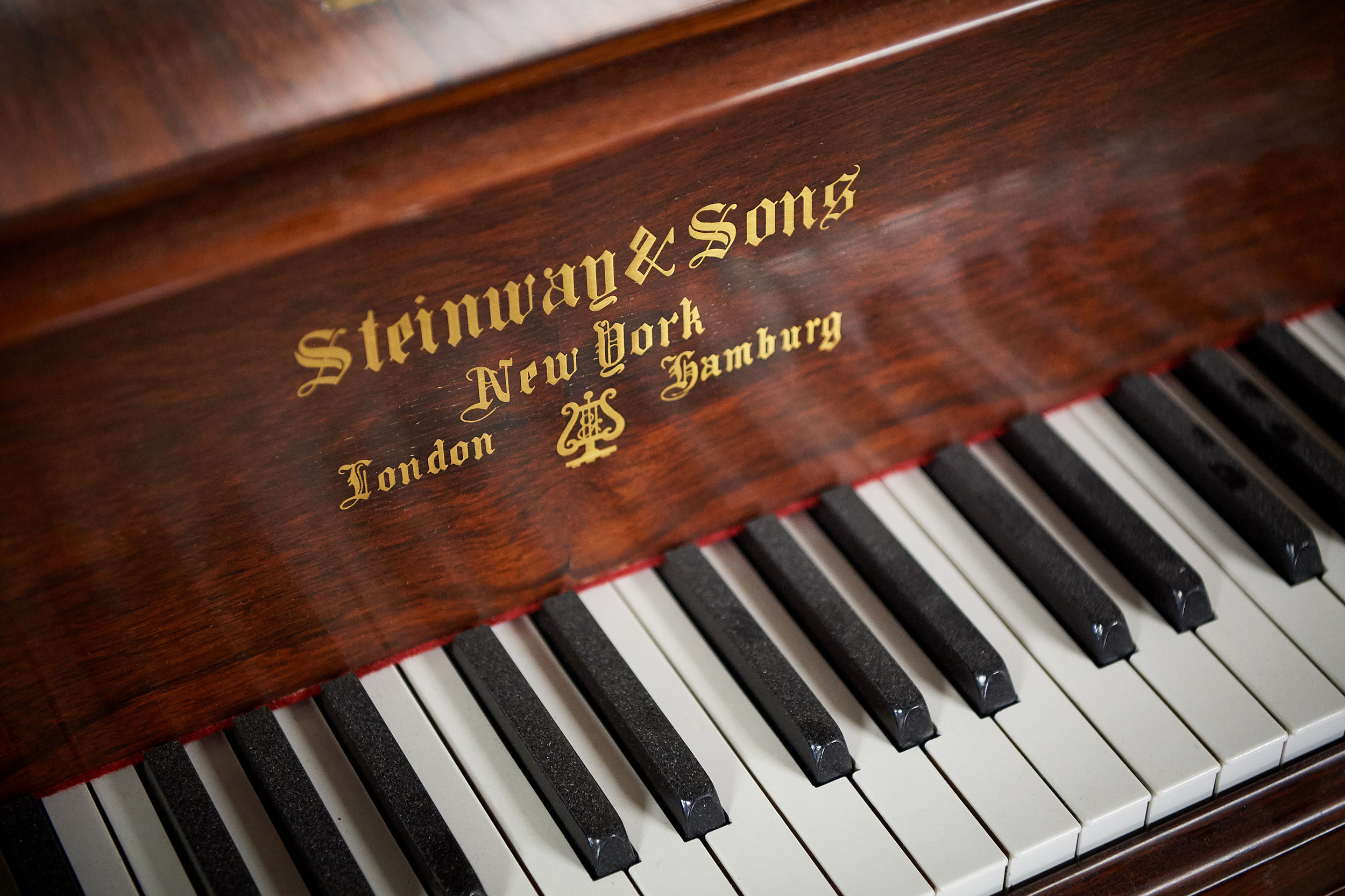
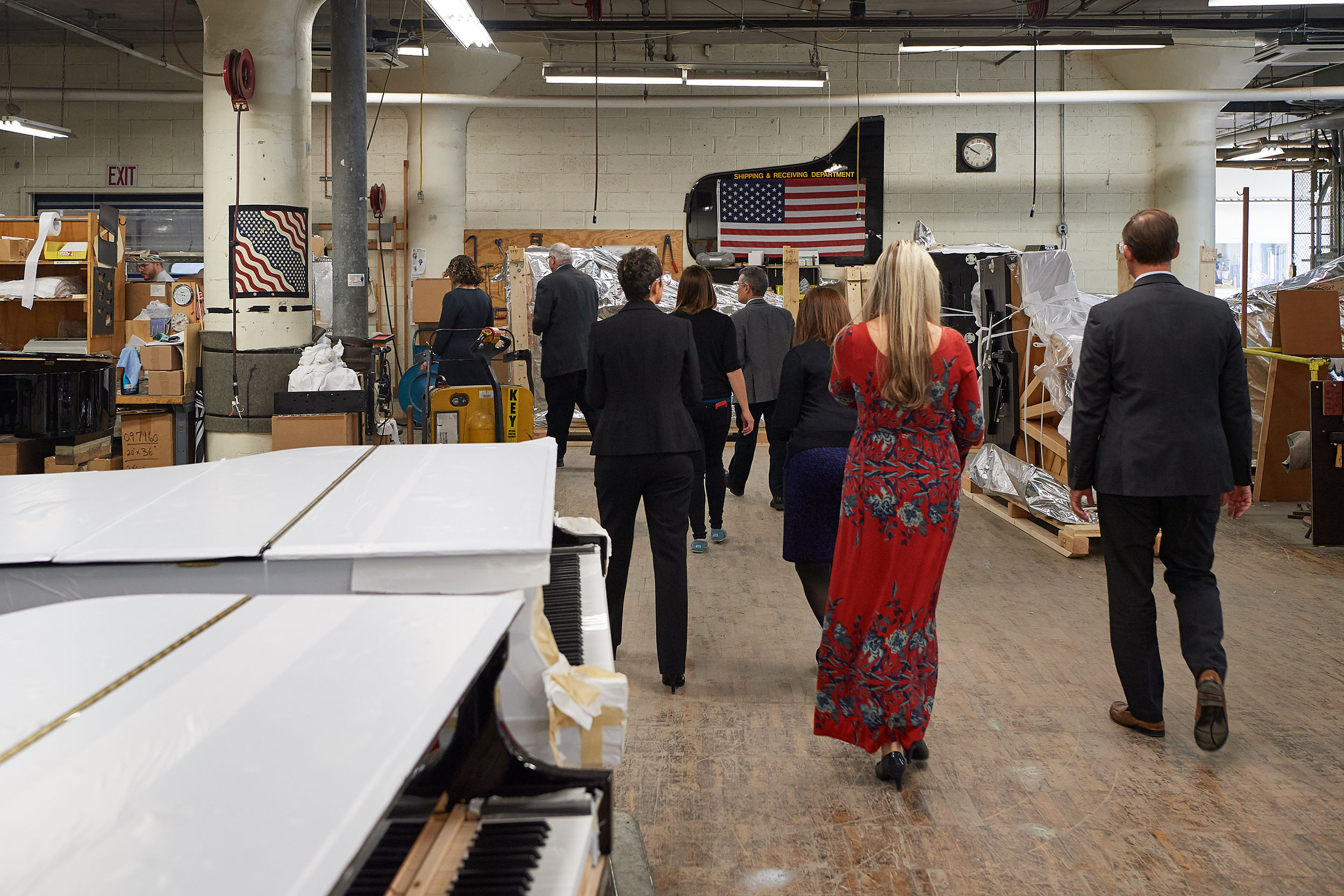
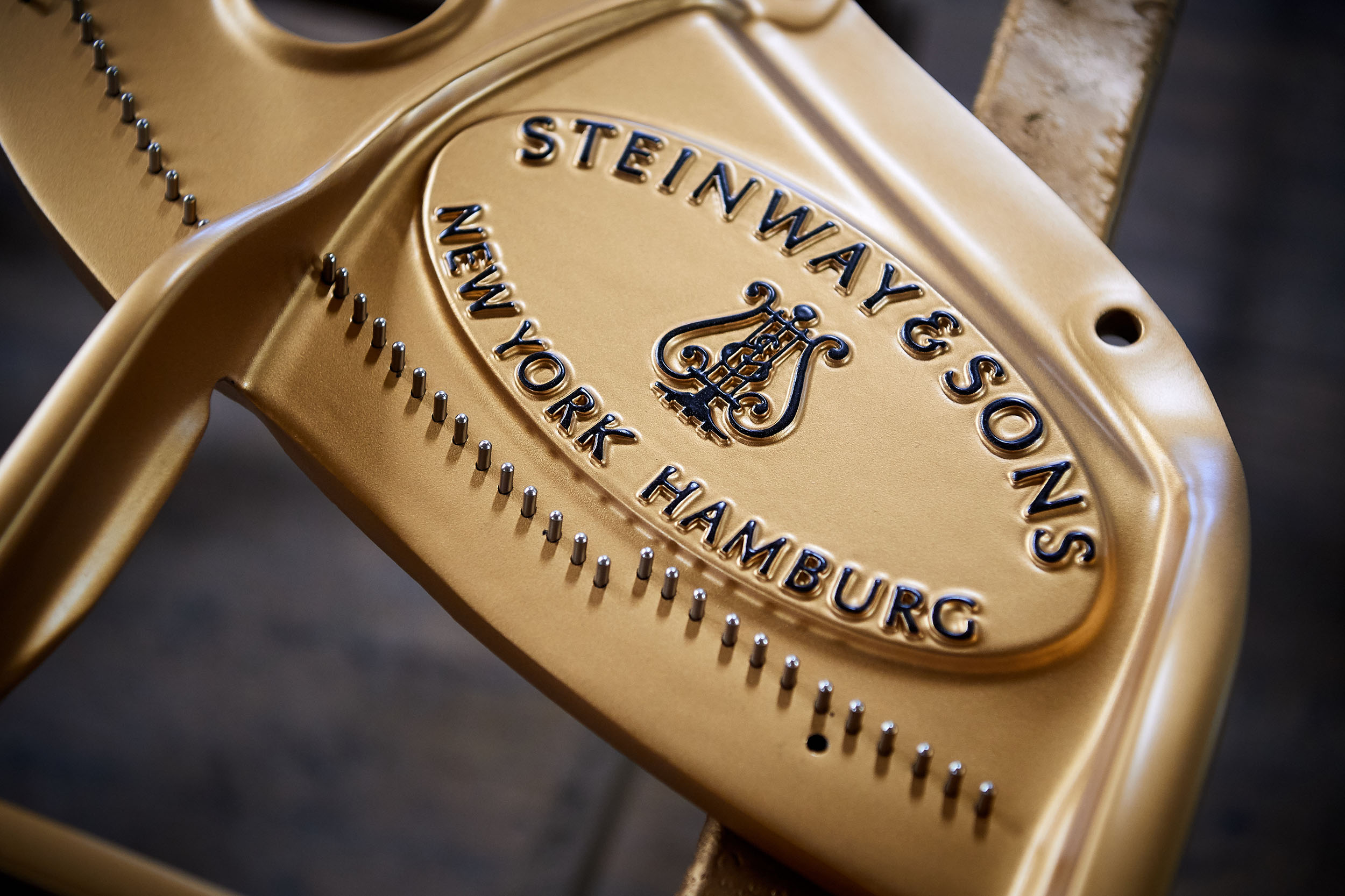
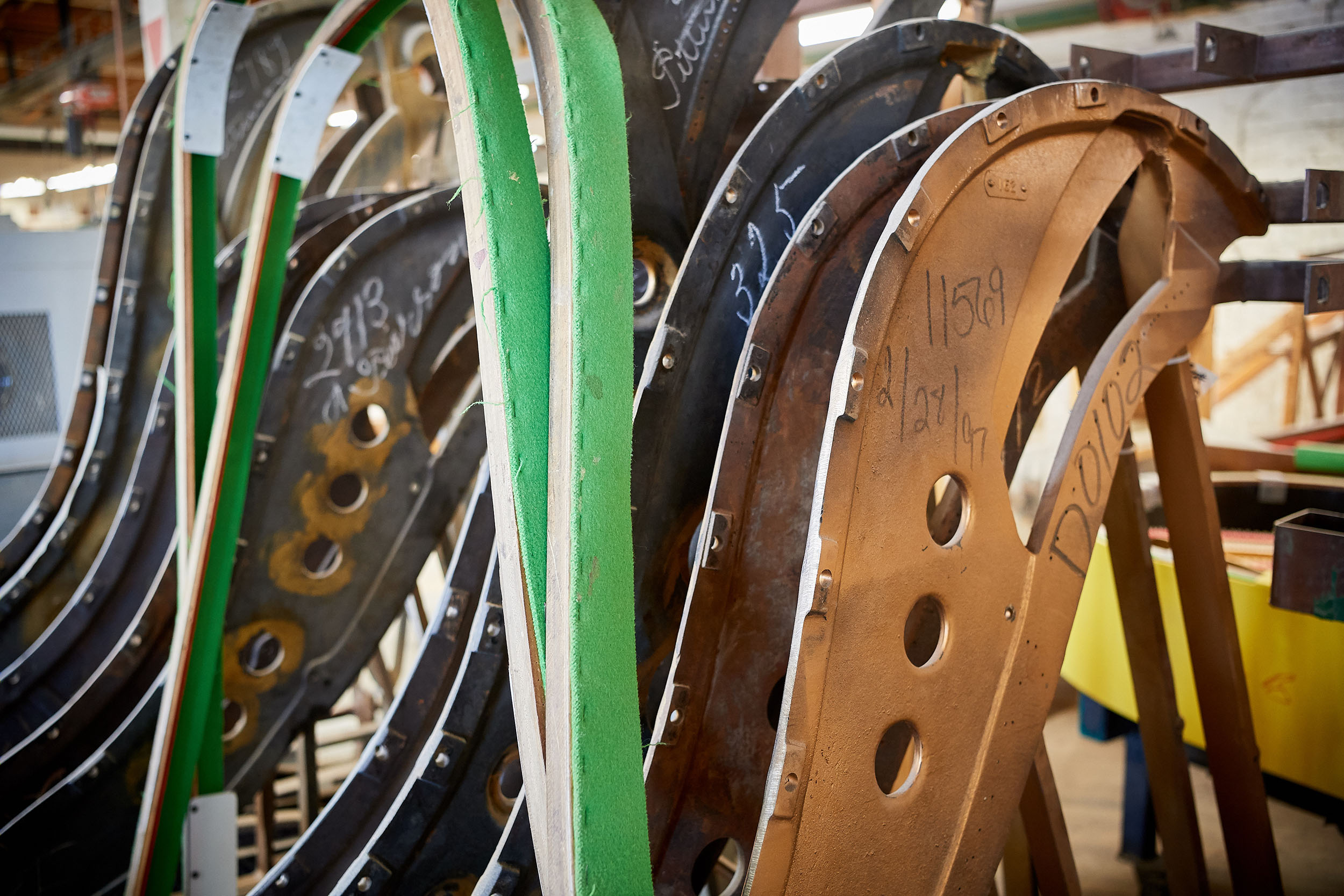
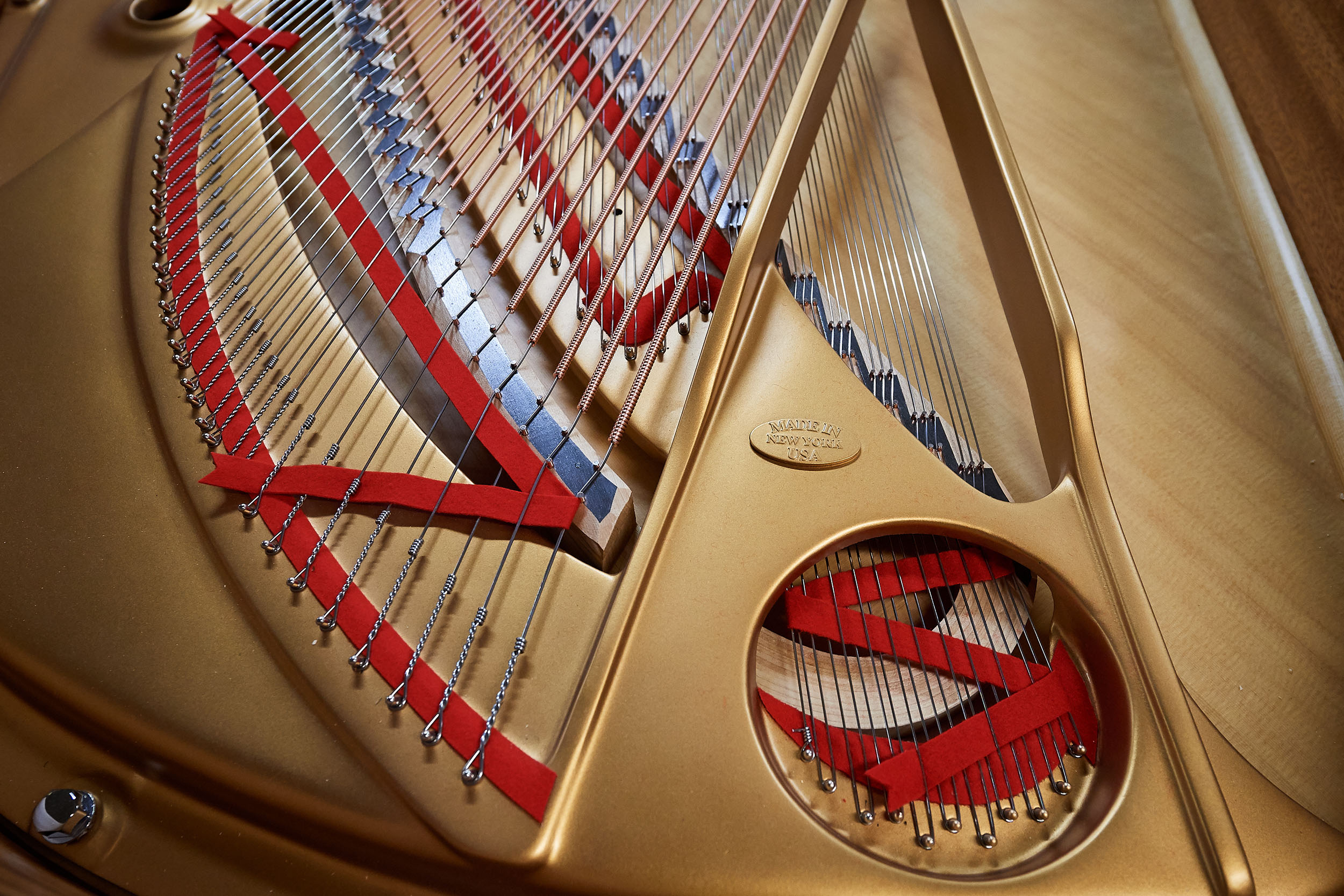
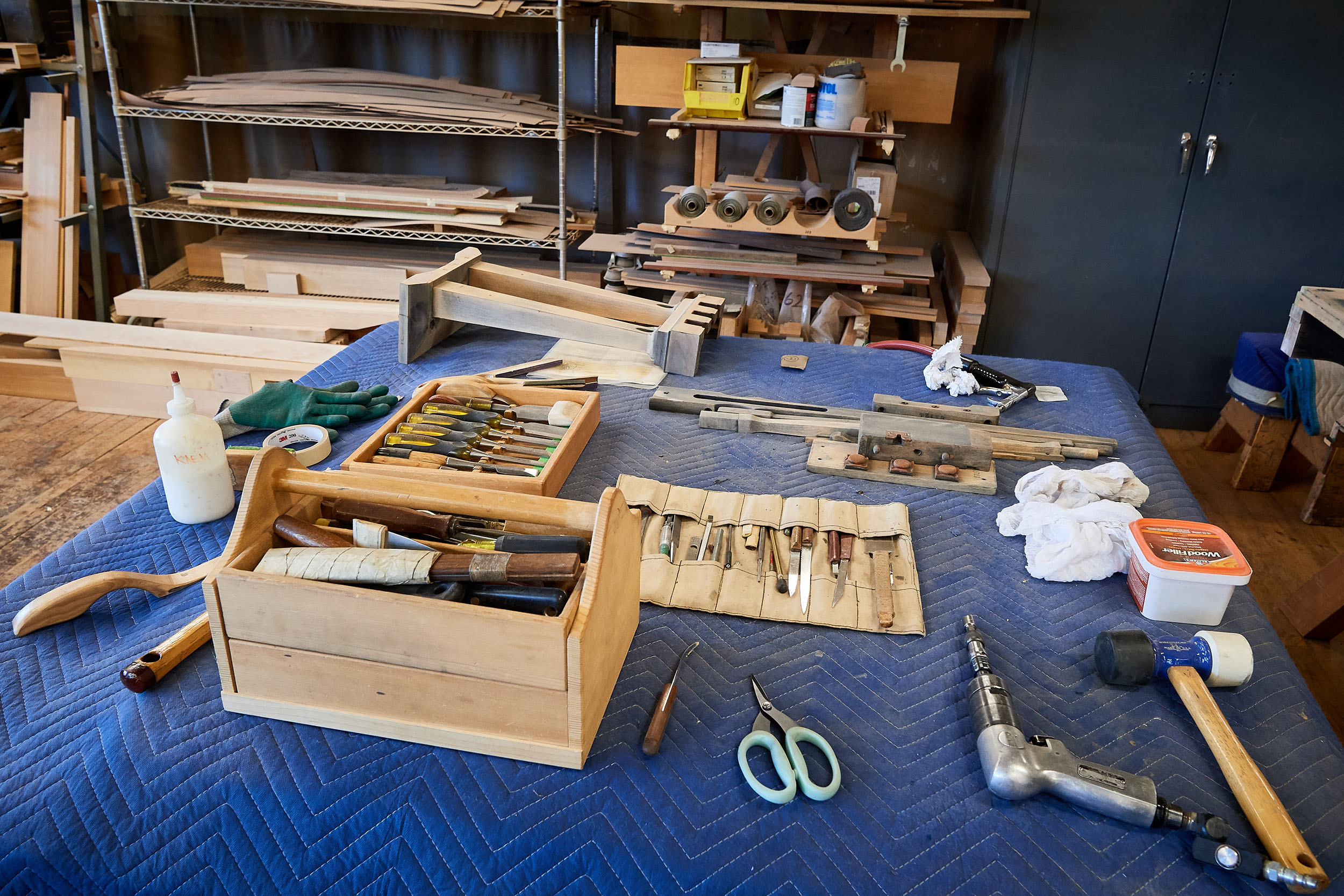
Leave a Reply